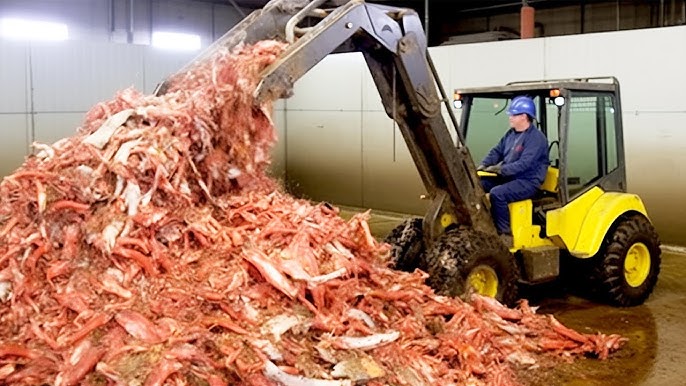Introduction
Gelatin is a staple in many of our favorite foods, from the chewy gummy bears we love to the delicate panna cotta that ends a perfect meal. But have you ever wondered where this magical ingredient comes from? Understanding the journey from raw materials to the final product can give us a deeper appreciation of the foods we enjoy and the science behind them.
What is Gelatin?
Definition and Basic Composition
Gelatin is a colorless, flavorless substance derived primarily from the collagen found in animal bones, skin, and connective tissues. It’s known for its ability to gel liquids, creating a solid yet wobbly structure that is both fun to eat and versatile in cooking.
Historical Background of Gelatin
The use of gelatin dates back to ancient times when it was first extracted by boiling animal bones and hides. Its use has evolved over the centuries, becoming a key ingredient in both culinary and non-culinary applications.
The Raw Materials: Where Gelatin Begins
Animal Sources: Bones, Skin, and Connective Tissues
The primary sources of gelatin are the bones, skin, and connective tissues of animals, particularly pigs and cows. These parts are rich in collagen, which is the protein that gives gelatin its unique properties.
Alternative Sources: Fish and Plant-Based Gelatin
While traditional gelatin comes from land animals, fish-based gelatin has become popular, especially in regions where pork and beef are not consumed. Additionally, plant-based alternatives like agar-agar and pectin offer similar gelling properties for those who avoid animal products.
The Production Process of Gelatin
Pre-Treatment: Cleaning and Preparing Raw Materials
The first step in gelatin production is the thorough cleaning of the raw materials to remove impurities. This is crucial to ensuring the final product is pure and free from unwanted contaminants.
Extraction: Turning Raw Materials into Gelatinous Substances
The extraction process is where the real magic happens. By soaking the cleaned bones and skins in either an acidic or alkaline solution, the collagen begins to break down.
Acid and Alkaline Processes
The choice between acid and alkaline processes depends on the type of raw material. Acid treatment is typically used for pig skins, while alkaline treatment is reserved for bones and bovine hides.
Heat Treatment
After the chemical treatment, the materials are subjected to heat, which further breaks down the collagen, transforming it into gelatin.
Filtration and Clarification: Refining the Gelatin
Once the gelatin has been extracted, it undergoes filtration to remove any remaining impurities. This step ensures that the final product is clear and smooth.
Evaporation and Concentration: Increasing Gelatin Strength
The filtered gelatin is then concentrated by evaporating excess water. This step increases the strength and firmness of the final product, making it suitable for various applications.
Drying and Grinding: Finalizing the Gelatin Powder
In the final stages, the concentrated gelatin is dried and ground into a fine powder, ready to be packaged and used in a variety of products.
Uses of Gelatin in the Food Industry
Gelatin in Desserts: From Gummies to Marshmallows
Gelatin is perhaps best known for its role in sweet treats. Gummies, marshmallows, and even jellies rely on gelatin for their texture and form.
Gelatin in Savory Dishes: Aspics and Meat Products
Beyond desserts, gelatin is also used in savory dishes like asparagus and processed meats, where it helps to bind ingredients and improve texture.
Gelatin in Non-Food Industries
Pharmaceutical uses: capsules and supplements
Gelatin’s versatility extends beyond the kitchen. In the pharmaceutical industry, it’s used to make capsules for medications and supplements, ensuring they dissolve easily in the stomach.
Cosmetic Applications: Face Masks and Hair Treatments
In cosmetics, gelatin is prized for its skin and hair benefits, often found in face masks and hair treatments that aim to improve elasticity and strength.
The ethical considerations and alternatives
Animal Welfare Concerns
The production of gelatin raises ethical questions, particularly concerning animal welfare. The sourcing of animal parts for gelatin can be a point of contention for those concerned about animal rights.
Plant-Based and Synthetic Alternatives to Gelatin
As a response to these concerns, plant-based and synthetic alternatives to gelatin have gained popularity. Agar-agar, derived from seaweed, and pectin, from fruits, are just a couple of options that offer similar gelling properties without the need for animal products.
The Future of Gelatin Production
Innovations in Sustainable Gelatin Production
The future of gelatin production may lie in more sustainable practices, including the use of less environmentally impactful raw materials and the development of more efficient extraction methods.
The rising popularity of Gelatin alternatives
With the growing demand for vegan and vegetarian products, gelatin alternatives are set to play an increasingly significant role in both the food and non-food industries.
Conclusion
Summarizing the Journey from Bones to Desserts
The process of making gelatin is a fascinating journey from raw animal parts to the delightful desserts we enjoy. Understanding this process allows us to appreciate the complexity and versatility of this unique ingredient.
Final Thoughts on Gelatin’s Role in Modern Life
Whether in food, pharmaceuticals, or cosmetics, gelatin continues to be a vital component in many products. As we move towards a future that values sustainability and ethics, alternatives to gelatin will likely become more prevalent, offering consumers more choices in how they enjoy their favorite products.





Comments